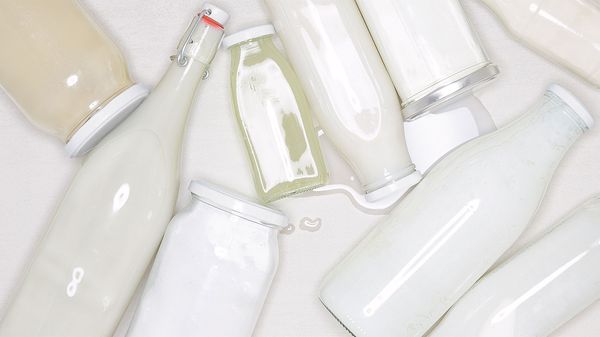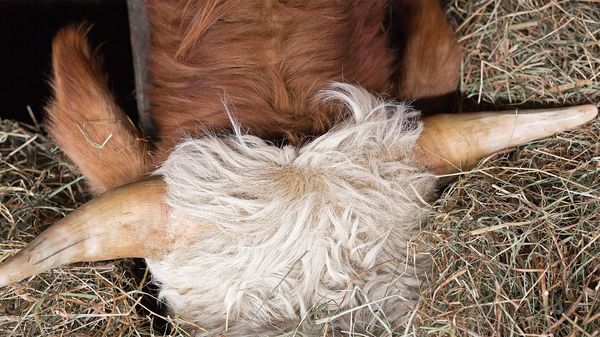
The French know how delicious cheese should taste.
Cheese is frequently aged for months. Our French neighbours refer to the process of ripening cheese as affinage, and it is a perfect blend of traditional craftsmanship and modern technology. Hervé Mons is an arbiter of good taste. We asked him to explain the philosophy behind aging cheese.

The kingdom of cheese
Affinage, the French word for the ageing of cheese, is a perfect blend of traditional craftsmanship and modern technology. We asked Hervé Mons, the company’s CEO, to explain its philosophy.
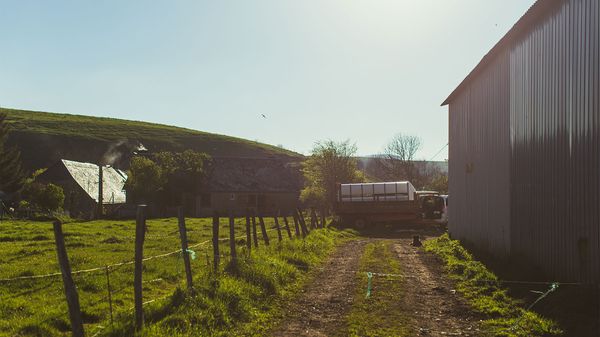
It's early in the morning,
as the sun casts its first rays over the rugged Auvergne mountain range, Hervé Mons’ minivan makes its way up the winding road. He drives fast – very fast. You almost feel like you’re racing along in a Formula One car. The Frenchman laughs quietly and reassuringly: “There’s nothing to be afraid of, I drove in the Paris-Dakar Rally for 20 years.” The Paris-Dakar Rally is the toughest off-road rally in the world. Hervé Mons steers his car the same way he steers his cheese empire: safely and with great sensitivity.
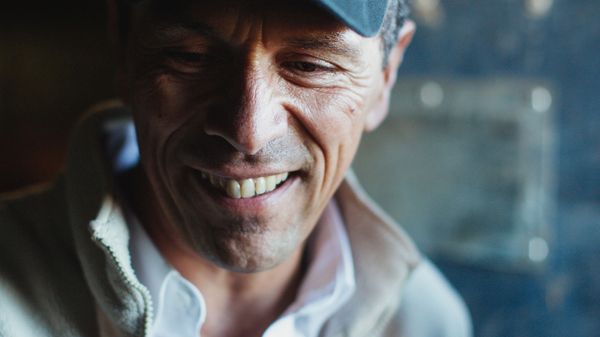
Who is Hervé Mons?
Hervé Mons is one of the best affineurs in France. His cheese is known to gourmets around the world. His cellars hold over 100 tons. Together with his brother Laurent, Hervé Mons, age 53, is the head of “Maison Mons,” and together the brothers have won multiple awards. The two affineurs have built a cheese empire that currently serves over 20 countries and has offices in Roanne, Lyon, Aix-en-Provence, London, Stockholm, and Madrid. Yet this success has not gone to the head of this nature-loving Frenchman. During his rare days off, his favourite activities are cross-country running and mountain biking.

Obtaining this milk is hard work done by hand
On this particular morning, Hervé Mons is on his way to his milk supplier high in the mountains of Egliseneuve. Josiane and Henri Bapt live in this remote region high in the mountains. For three generations they have been raising Salers, an old French cattle breed known for its delicious milk. Following the natural cycle, cows start giving milk once they’ve been stimulated by a calf. They are milked twice a day, seven days a week from April to November. Each milking produces 280 to 300 litres of milk, close to 40,000 litres per month, which corresponds to about 4,000 kilograms of cheese. During the day the herd of sixty Salers graze on the region’s lush meadows while their milk is curdled in a vat at 33°C, then skimmed by hand, pressed into round moulds and the moisture expelled.
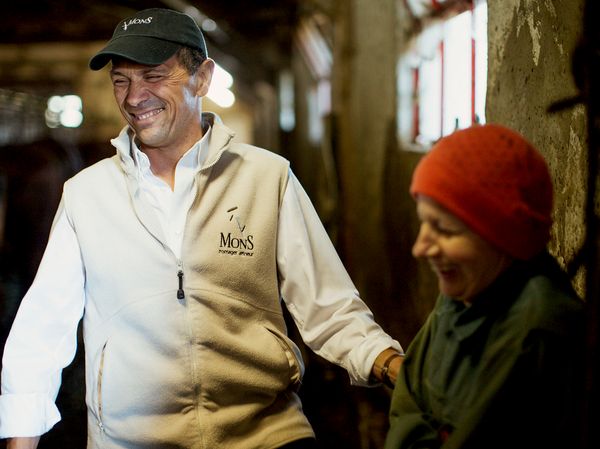
“Good cheese is impossible without superior raw materials"
Hervé Mons often comes here to check in with his suppliers. “A close, friendly relationship is important,” he explains. His philosophy: “These are milk producers who control the way their cows live and what they eat, which in turn affects how the milk tastes. We work with 130 raw milk farmers in France and Switzerland who produce milk according to the age-old tradition.” While he talks he pours a shot of still-steaming milk into a cup and tastes: a slightly sweet aroma of honey and nuts. It’s the basis for Saint-Nectaire Fermier, the highly aromatic raw milk cheese of the region.
Every singe detail in the production chain is important, no matter how small
“In addition to milk quality and cheese production, the climatic conditions during ripening also play an important role,” he explains. The heart of his company is an abandoned 185-metre- long railway tunnel in which five large wooden train cars store 100 tons of cheese at 94 percent humidity and 9°C. “Maison Mons” has three such tunnels. Hervé Mons talks about the handling of cheese during the ripening process with deep emotion and passion – almost as if he were talking about raising his children. “For the flavour and consistency to develop optimally, each cheese requires very special care,” says Mons. “It has to be carefully rubbed with salted water, brushed and turned. The cheese rind is home to two to three million microorganisms. It makes a difference whether the cheese is stored on wood, straw, paper, or stone. All these factors affect its flavour, its aromas, its consistency,” explains the expert.
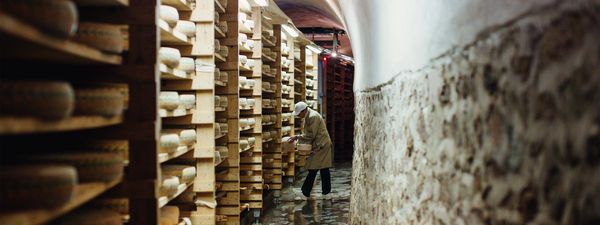
All five senses
Together with his 28 employees, Mons observes, monitors, and controls the process. All five senses are called into play, even hearing. Thumping on the rind helps to identify the cheese’s stage in the ripening process. It takes between four months and three years before the cheese is mature and then beautifully packaged and sent off to urban gourmet meccas.
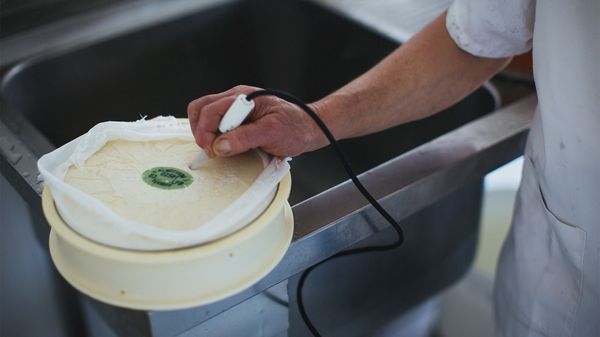
"We'd rather invest in our quality”
The quality of its products has long since earned “Maison Mons” a worldwide reputation – without the aid of a huge PR machine. “We don’t need it, we’d rather invest in our quality,” says the Frenchman, laugh lines appearing on his face. “Word-of-mouth advertising is much more efficient.” He gives a modest and natural impression, even though he has become one of the global players in the gourmet industry. Personal recommendations by satisfied customers also have a synergistic effect that benefits him. This communicative businessman loves to interact with people. He’s happy to share his expertise with other cheese specialists, resulting in invitations to Japan and the U.S., where he passes on his knowledge of affinage on a regular basis.
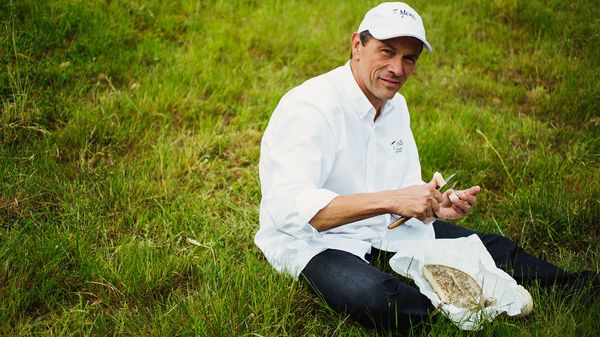
A heavenly taste of the French way of life: Savoir-vivre.
Mons Fromage in Saint-Haon- le-Châtel is known far beyond the borders of France. It is the world of affinage so appreciated by gourmets, and this 53-year-old man seems to be an arbiter of good taste. The Comté or Reblochon that ripens in his cellar has as much in common with the plastic cheese from the supermarket as an IKEA bookshelf has with a custom-made piece by Antonio Citterio.

